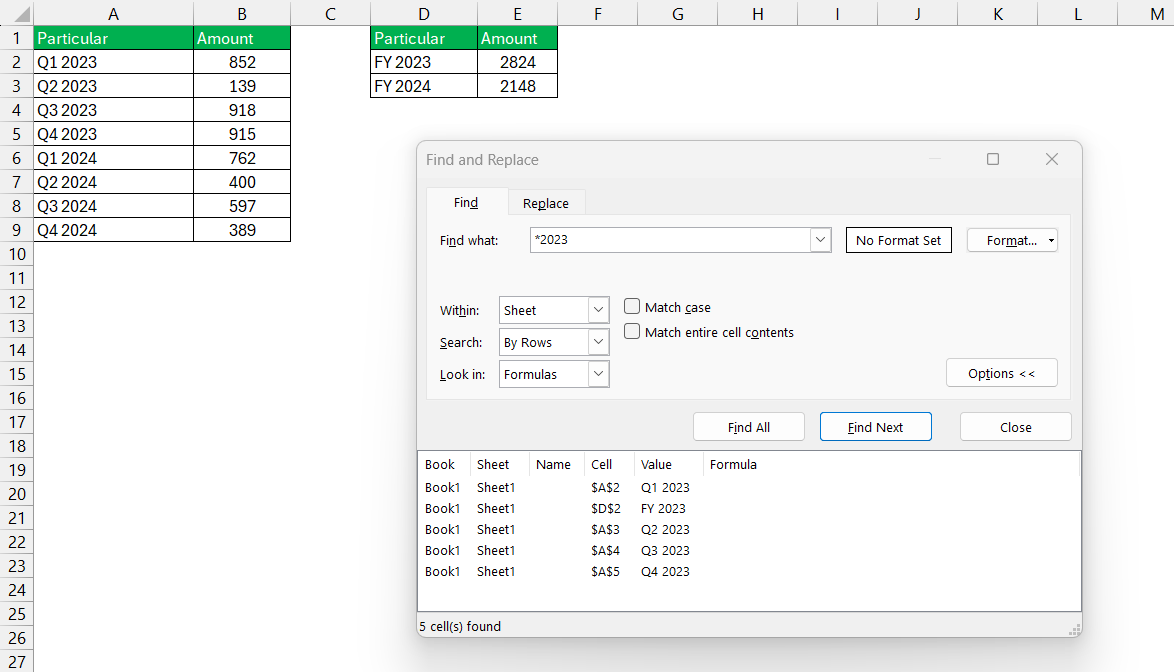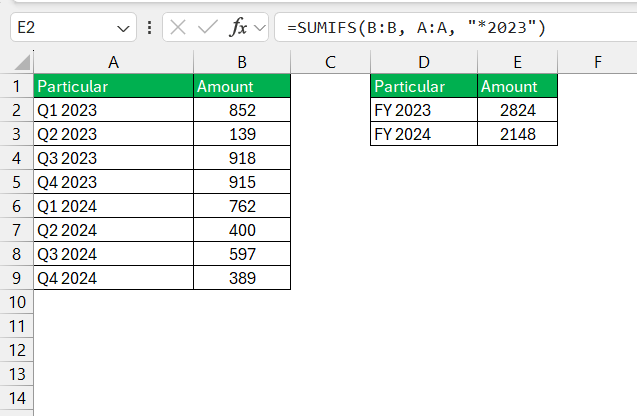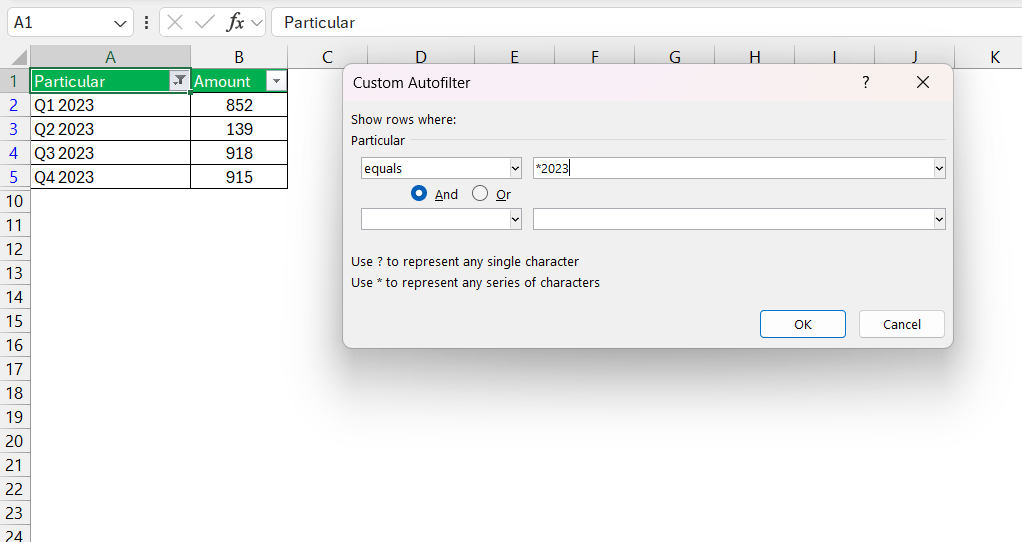In Microsoft Excel, wildcards are powerful tools used in searches, filtering, and data manipulation tasks. They allow users to represent one or more characters when searching for specific patterns within text or data. Understanding how to effectively utilize wildcard in Excel and significantly enhance productivity by enabling flexible and dynamic data handling within spreadsheets.
Key Takeaways:
- Versatility in Data Manipulation: Excel wildcards facilitate dynamic searches, filters, and formula creation, making tasks like data extraction and pattern recognition effortless.
- Time-Saving Tools: By enabling partial matches and flexible criteria, wildcards streamline complex operations, saving significant time and effort in spreadsheet management.
- Integration with Excel Functions: They seamlessly integrate with functions like COUNTIF, SUMIF, and FILTER, allowing for precise data analysis based on varied criteria patterns.
- Error Resolution with Tilde (~): The tilde (~) character resolves issues where wildcards might be misinterpreted, ensuring accurate data processing without unexpected errors.
- Enhanced Data Visibility: Wildcards in Excel filters enhance data visibility by selectively displaying information that meets specific criteria, ideal for refining large datasets swiftly and effectively.
Introduction to Excel’s Wildcard Wizards
What is Wildcard in Excel
Excel wildcards are your secret allies for spreadsheet agility. These crafty little characters let you perform searches, filter data, and craft formulas with a level of flexibility that’s fit for a spreadsheet wizard. By replacing unknown or variable amounts of text, they empower you to work smarter, not harder.
Think of them like the jokers in a deck of cards, where they can transform to match whatever is needed for the perfect formulaic magic trick.
Why You Should Get To Know Excel Wildcards
Getting acquainted with Excel wildcards can elevate your data manipulation game to the next level. Why? Because they save time and expand your capabilities. With wildcards, those daunting tasks of finding and organizing data suddenly become swift and almost effortless.
Whether you’re partially matching strings, summing based on specific criteria, or highlighting key information, wildcards are the tools that help you work with data that isn’t always predictably formatted. Knowing how to wield these tools effectively means less frustration and more productivity, not to mention the impressed colleagues gathering around your desk!
Diving into the Types of Excel Wildcard Characters
The two primary wildcards used in Excel are the asterisk (*) and the question mark (?).
- Asterisk (*): Represents any number of characters (including zero characters). For example, searching for “app*” would match “apple”, “application”, “approach”, etc.
- Question Mark (?): Represents a single character. For instance, searching for “h?t” would match “hat”, “hot”, “hit”, etc.
When to use Wildcards in Excel
Wildcards in Excel are versatile tools that enhance your ability to manipulate and analyze data efficiently across various functions and features. Here’s a detailed explanation of where and how you can effectively use wildcards in Excel:
Find and Replace
Excel’s Find and Replace feature allows you to search for specific text patterns throughout your spreadsheet and replace them as needed. Wildcards in this context enable you to find variations of words or phrases based on flexible criteria.
Placing an asterisk (*) before “2023” finds all instances where “2023” appears at the end of a phrase or sentence like “Q1 2023”, “Fiscal Year 2023”, etc.
Functions
Excel functions such as COUNTIF, SUMIF, AVERAGEIF, and their plural counterparts (COUNTIFS, SUMIFS, AVERAGEIFS) support wildcards. This functionality allows you to perform calculations based on specific criteria that include wildcard patterns.
Formula: =SUMIFS(B:B, A:A, “*2023”)
This formula sums values in column B where the corresponding cell in column A ends with “2023”.
Filters
Excel’s filtering options allow you to display only the data that meets specific criteria. Wildcards in filters enable you to precisely filter data based on patterns rather than exact matches.
Filters rows that end with “2023”.
Solving Common Wildcard Puzzles
When Excel Wildcards Don’t Work – Troubleshooting Tips
When Excel wildcards don’t obey your bidding, it’s not sorcery amiss – it’s often a simple fix awaiting discovery. First, double-check you’re using the correct wildcards (* or ?) for your intended task. Remember, the tilde (~) is your go-to for escaping wildcard characters, turning them back into their literal selves. Sometimes the quest involves hunting down a sneaky space or an unintended character.
Other times, the function you’re using may not support wildcards, or perhaps a formula error has crept into your mystical spreadsheet realm. Navigate these labyrinthine possibilities with the meticulous eye of a potion master checking their elixirs, and you’ll restore your wildcards to their full glory.
Combining Functions for Complex Criteria with Wildcards
Combining functions in Excel with wildcards feels like orchestrating a powerful symphony of data manipulation. Ever tried to filter a list where the criteria are not straightforward, perhaps something like finding all expenses filed under a project code with mixed formats? This is where you merge Excel’s logical functions (IF, AND, OR) with wildcards within a master formula. For instance, =IF(SUMIFS(Expenses, Codes, "*" & Project & "*") > 0, "Match", "No Match"), unleashes the potential to pinpoint your data with nuanced criteria. Complexity bows down to simplicity as wildcards broaden the scope of Excel’s logical functions, creating a precise yet flexible data-filtering wand.
FAQs: Answering Your Wildcard Queries
Why do we use wildcards in Excel?
We use wildcards in Excel to search, filter, and manipulate data with flexible criteria. They’re your go-tos for dealing with partial matches or when the complete data entry isn’t known, great for tasks like finding a string within a larger text or creating dynamic formulas that adjust to varying content. They boost productivity by simplifying complex searches and data analysis tasks.
How Do I Use Wildcard Characters in Excel Formulas?
In Excel formulas, use wildcards to stand in for unknown characters: an asterisk (*) for any number of characters, a question mark (?) for a single character, and a tilde (~) to search for the wildcards themselves. Add them to functions for searching or matching, like =COUNTIF(A1:A10, "*example?") to count instances that end with ‘example’ followed by any character.
Why Aren’t My Excel Wildcards Working Correctly?
If Excel wildcards aren’t working, ensure you’re using the correct one (*, ?, ~) for the task. Check that they are not misinterpreted as literal characters—use a tilde (~) before a wildcard if so. Also, confirm the function you’re using supports wildcards, and look out for any hidden errors in your formulas.
What is an example of a wildcard search?
An example of a wildcard search in Excel is using =SEARCH("a?to*e", A1) to find any occurrences in cell A1 that start with ‘a’, followed by any character, then ‘to’, followed by any number of characters, ending with ‘e’, like ‘autozone’ or ‘agitate’.
What is the wildcard match formula in Excel?
The wildcard match formula in Excel often involves the MATCH function with wildcards, like =MATCH("*criteria*", range, 0). This will return the position of the first cell in the range that contains the word ‘criteria’ anywhere in the cell. Use “*” for any sequence of characters, and “?” for a single character.
John Michaloudis is a former accountant and finance analyst at General Electric, a Microsoft MVP since 2020, an Amazon #1 bestselling author of 4 Microsoft Excel books and teacher of Microsoft Excel & Office over at his flagship MyExcelOnline Academy Online Course.










